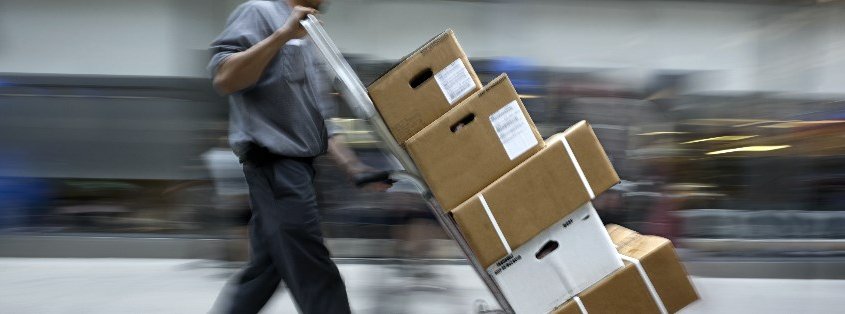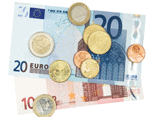How delivery and return options affect the decision to buy
This year’s “MetaPack Consumer Research Report” investigated the role played by delivery in ecommerce and what merchants can do to fulfil their customers’ expectations. The report is based on an online survey of 3,589 consumers in the US, the UK, France, Germany, Spain, the Netherlands and Italy.
Free-of-charge delivery
For 47% of all those surveyed, free-of-charge deliveries help to encourage them to make an online purchase. In fact, 71% of respondents have added one or more additional items to their basket simply in order to benefit from the minimum order value for free shipping. For merchants, offering free-of-charge deliveries for orders above a certain value can therefore help to increase their turnover.
Options for returning goods
Even at the order stage, 33% of those surveyed know they will be returning at least one of their ordered items later – in situations, for example, where they order the same shoes in two different sizes in order to select the pair that fits best. Among 18 to 25-year-olds, this figure rises to 46%. This demonstrates how essential it is now to offer customers a simple, transparent and straightforward option for returning goods.
Overall, in fact, only 12% of respondents have made no use at all of the returns facility. In contrast, a full 49% have refrained from making a purchase because of the merchant’s rules on returns, while 39% check how a shop’s returns process works before placing their order.
Currently, only 28% of respondents say they have been satisfied with the returns service. A total of 43% claim that information on the returns process is often hard to find on merchants’ websites. This means that online retailers have a very good opportunity to differentiate themselves from the competition by offering a simple, customer-friendly system for returning goods. Note, however, that 60% of survey respondents would not be prepared to pay for a satisfactory returns process.
Expectations affected by local factors, too
The results show that the local culture, just as much as the maturity of the market, influence customers’ expectations. In the next section, we outline some of the issues that tend to illustrate cultural differences particularly clearly:
Postal deliveries
- In Germany, 58% of respondents state that delivery by mail is their preferred shipping method.
- In contrast, the postal service is the least favourite option for 28% of Spanish customers and 45% of those in France.
Delivery location: Click & Collect
- The option to collect items from the merchant’s physical store is very popular in the UK (among 68% of respondents) as well as in France and Spain (51% in each market).
- However, only 32% of Germans and 38% of Italians favour such “Click & Collect” services.
Delivery location: pick-up point (in a nearby store)
- This service is very popular among French consumers, being named by 76%.
- It also used by 54% of Dutch respondents and 49% of those in Spain.
Delivery location: a locker
- This option is preferred by 31% of German consumers.
- In an international context, however, the method is used by only 12% of those surveyed and, as such, is currently the least popular delivery option.
Delivery status: choice of delivery date
- Customers nowadays place a lot of value on being able to predict or control details of their orders. For example, 47% of consumers in the Netherlands and 40% of those in the UK have already made use of options for specifying delivery dates.
Delivery status: keeping customers informed
- For 88% of respondents, it is important to be able to track the progress of their order using special services, emails or apps.
- In fact, 58% said they had actively tracked their orders on more than two occasions.
- Tracking deliveries online is favoured by 93% of Germans, 91% of French and 90% of Italians.
- For 18% of Dutch respondents and 16% of those in Spain, special apps represent the most popular means of tracking their orders.
Returns to the retailer’s physical store
- For 44% of those surveyed in Spain – as well as 46% and 45% of British and French respondents respectively – returning goods to a physical shop is the most favoured method.
Delivery as a decisive differentiating factor
The results of the study have shown that today’s consumers expect rapid and flexible delivery options. For many, however, having a straightforward process for returning goods is also a vital factor when deciding to order from a shop. Where such an option is missing, for many consumers this is reason enough to withdraw from ordering.
For online retailers, finding a route between trading profitably and fulfilling customer requirements can be a minefield. Even so, opportunities do exist for them to stand out from the competition. Local factors and the maturity of the market concerned also influence customer expectations in terms of the retailer’s service.
You can read more about the results of the study by downloading the full “MetaPack Consumer Research Report”.
Friederike Beins
Friederike Beins ist Mitarbeiterin bei Newsletter2Go.







Leave a Reply
Want to join the discussion?Feel free to contribute!